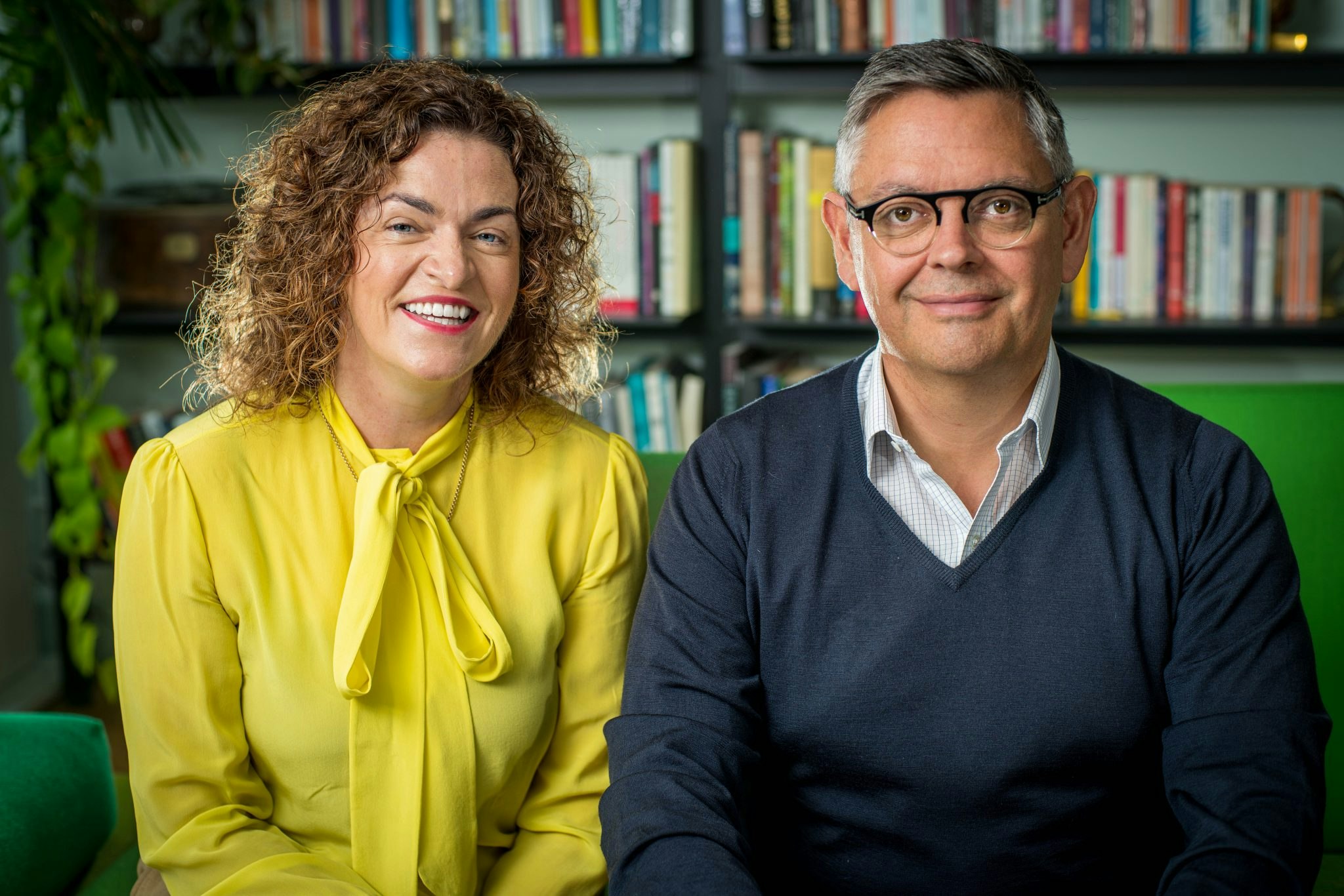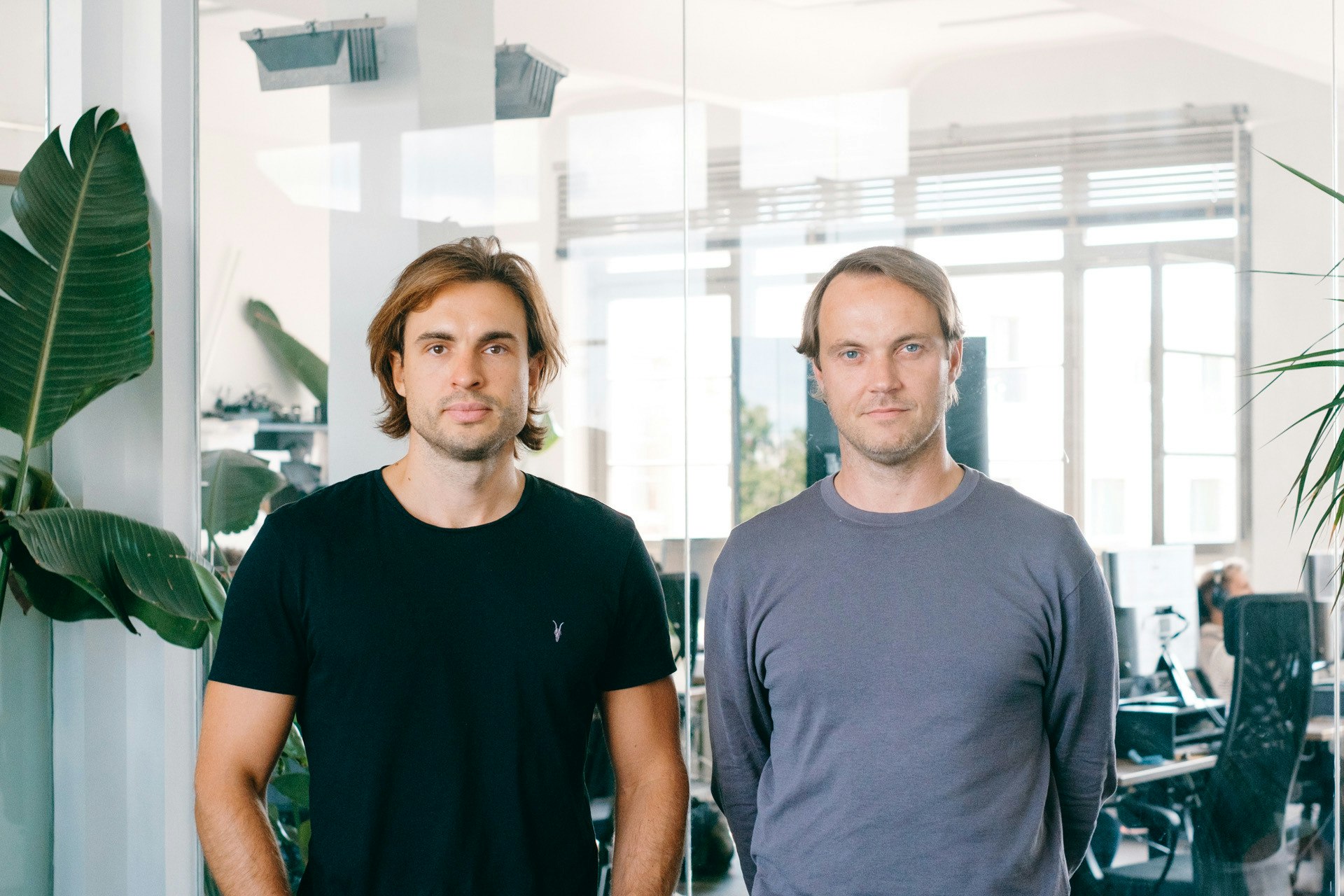The grid, a system of pylons, cables and transformers, has delivered power to our homes and offices for over a century. But as renewable power generation amps up, the grid is facing an enormous shake-up — and there are growing concerns that it’ll struggle to cope.
A recent report from the International Energy Agency (IEA) warned that the state of the grid could hamper the transition to clean energy. It called for urgent upgrades both to the grid’s physical infrastructure and the way it is managed.
Across Europe, startups are working on solutions to help the grid adjust to the influx of renewables.
The problem
“For the first 125 years of electricity, the grid was fine because our demand was very predictable,” says Paul Domjan, cofounder of Enoda, an Edinburgh-based company working on grid solutions.
As well as predictable demand, our supply came from fossil fuels, which are easy to ramp up and down depending on demand. In order to avoid damaging infrastructure, the grid has to remain at the same frequency — around 50 Hertz.
Today, things like electric vehicles and heat pumps mean demand is far less predictable. On the supply side, renewable energy sources like wind and solar can’t be turned on and off on command to match that demand.
Despite all the changes, the grid has remained the same. “We still have the exact same system that William Stanley, Nikola Tesla and George Westinghouse built,” says Enoda’s Domjan.
In some parts of Europe, it’s now no longer possible to onboard new renewable generation sources because of lack of balancing capacity in the grid. Balancing the grid is already extremely expensive — it cost the UK £5.6bn in 2022 alone, a cost entirely borne by consumers.
The physical solution: batteries
Battery storage is one of the simplest solutions to the problem. Batteries are able to store up energy when there’s less demand and release it when demand is higher, and the number of companies working on battery storage in the last year has increased markedly.
Finnish startup Cactos, which builds battery energy storage systems, announced a €26m raise on January 10. Cactos supplies battery storage systems to industrial companies, creating a system that supports the stability of the wider transmission system.
“Batteries and energy storage are the technologies that will eventually provide people with stable electricity prices,” says Cactos founder and CEO Oskari Jaakkola.

Field, a UK battery storage company, raised £200m last year and Ingrid Capacity, a Swedish startup, secured $100m last year in a combination of equity and asset financing for its large-scale battery facilities.
Since its launch in 2022, Ingrid Capacity has focused on the Swedish grid, but is now looking to expand across Europe, according to chief strategy officer and cofounder Nicklas Bäcker.
“When there are large volumes of intermittent energy in the system, batteries are needed to a certain extent, to even out the imbalance that occurs,” Bäcker says.
Companies that offer battery energy storage systems often have an agreement with the grid to act as a balance responsible party (BRP), responsible for helping to rectify imbalances in the grid. They can also trade energy on the wholesale energy markets in Europe or sometimes use a middleman, such as a large energy company, to trade stored energy for them.
The software solutions: aggregators
Other startups use a combination of hardware and software to help maintain the balance in the grid.
Dutch startup Sympower works by partnering with companies that use a significant amount of energy. It gains access to some of their energy assets and can turn them on and off when the grid requires balancing. By aggregating the demands of several companies together, Sympower aims to deliver a high amount of balancing capacity to the grid.
The companies are paid by the grid for acting as reserve balancing capacity and then paid more if they’re actually needed.
Other companies, like Norwegian-Swedish startup Tibber, use home energy assets to bring flexibility to the grid.
“We were the first operator to start using consumption flexibility against the Swedish power grid,” says Daniel Lindén, cofounder of Tibber. At first, Tibber used customers’ electric vehicles to balance the grid — they can act as mini batteries dispatching and storing energy. Tibber now also integrates heat pumps, solar panels and domestic batteries.
Incoming regulation could boost grid tech
Some countries have allowed grid flexibility for longer than others. The UK has been a leader; Greece opened up its flexibility market last year and industry insiders expect Poland to do the same this year.
Despite being a leader in battery production, Sweden has been one of the slower to adopt grid flexibility mechanisms. Companies wanting to act as a flexibility partner in Sweden have to go through a middleman, but from May this year, they’ll be able to interact directly with the grid.
Ingrid Capacity’s Bäcker says the new Swedish regulation will significantly increase the number of software companies able to help balance the grid.

Others are less convinced that the change will have an impact. John Diklev, the founder of energy flexibility startup Flower, says the regulation doesn’t go far enough. “If we look at more mature markets like the UK or Germany, we see that the value creation from support services to the grids are moving towards procuring energy. With the new regulation in Sweden, you still cannot do that,” Diklev says.
Uniformity between grid networks is also important for founders in the flexibility sector. Finnish startup Capalo AI, which runs energy storage batteries next to wind and solar parks, is expanding first to Sweden because it has similar regulations to Finland.
“One of the reasons why we’ve picked Sweden is that the Nordic markets are pretty similar and they have the same permissions as in Finland and Denmark,” says founder Henri Taskinen. “It's a more straightforward job than to go from here to Germany for example.”
Changing the grid itself
As interest in grid innovation ramps up, companies are also starting to work on tech that changes elements of the grid itself.
Edinburgh-based Enoda makes a device that replaces the transformer and other parts of the distribution substation (the place where the high voltage current from the main grid network transforms into a lower voltage, one suitable for domestic use).
“It makes sure that, no matter what kind of energy choices are being made on the wider network, it looks like a perfectly balanced load and, vice-versa, that problems on the distribution network don’t impact the wider network,” says Enoda cofounder Paul Domjan.
And as investors cotton on to the potential of grid tech and its central role in the transition to renewable power, we’ll likely see more solutions emerge — and bigger ticket rounds in the sector.
“There’s a mindset that the grid is just wires: that we plug things in and they work. That used to be the case,” says Domjan, “but it’s not anymore.”


